 W
WBangkok Folk Museum, or Bangkokian Museum, is a museum in Bangkok, Thailand. It is at house number 273 on Soi Charoen Krung 43, near the Sri Rat Expressway several hundred metres from the left bank of the Chao Phraya River and the intersection of Soi Charoen Krung 43 and Maha Set Road.
 W
WThe Belarusian Great Patriotic War Museum is a museum in Minsk, Belarus.
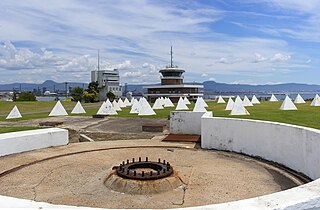 W
WBreakwater Battery, was a coastal defence battery at Port Kembla, New South Wales, Australia during World War II.
 W
WBrest Fortress, formerly known as Brest-Litoŭsk Fortress, is a 19th-century fortress in Brest in present-day Belarus. In 1965 the title "Hero Fortress" was given to the fortress to commemorate the defence of the frontier stronghold during the first week of the German-Soviet War of 1941-1945 when Axis forces invaded the Soviet Union with the launch of Operation Barbarossa on June 22, 1941. The title "Hero Fortress" corresponds to the title "Hero City" that the Presidium of the Supreme Soviet of the Soviet Union awarded to an eventual total of twelve Soviet cities.
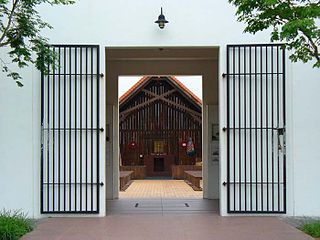 W
WThe Changi Museum is a museum dedicated to Singapore's history during the Second World War and the Japanese occupation of Singapore in particular.
 W
WThe Darwin Military Museum was originally established as an artillery museum by the Royal Australian Artillery Association (NT) Inc (RAAA) to exhibit photographs and artefacts from Darwin's history during World War II. The Museum now has a large exhibit of items from the war, including Navy, Army and Air Force items from Australian, US and other armed forces. It is set amongst concrete gun emplacements and other fortifications in an area that was one of the most heavily fortified parts of Australia during the war.
 W
WEbensee was a subcamp of Mauthausen concentration camp established by the SS to build tunnels for armaments storage near the town of Ebensee, Austria, in 1943. The camp held a total of 27,278 male inmates from 1943 until 1945. Between 8,500 and 11,000 prisoners died in the camp, most from hunger or malnutrition. Political prisoners were most common, and prisoners came from many different countries. Conditions were poor, and along with the lack of food, exposure to cold weather and forced hard labor made survival difficult. American troops of the US 80th Infantry Division liberated the camp on May 6, 1945.
 W
WEgholm is a manor house and estate situated on the Hornsherred Peninsula, between Kirke Hyllinge and Skibby, in Lejre Municipality, some 60 km west of Copenhagen, Denmark. The Neoclassical main building from 1824, a gatehouse from 1870, a barn from 1880, a stable from circa 1890 and a former horse mill were listed on the Danish registry of protected buildings and places in 1998. Another building is now operated as an arms museum under the name Egholm Museum. The estate covers 770 hectares of land.
 W
WThe Fort Hommet 10.5 cm coastal defence gun casemate bunker is a fully restored gun casemate that was part of Fortress Guernsey constructed by the forces of Nazi Germany between 1940 and 1945.
 W
WFort Siloso is the sole restored coastal gun battery from the 12 such batteries which made up "Fortress Singapore" at the start of World War II. The fort is situated on Pulau Blakang Mati, an island south of mainland Singapore. The fort is now a military museum open to the public. The Surrender Chambers in Fort Siloso reopened in June 2017 with a refreshed exhibition and free admission.
 W
WFranja Partisan Hospital was a secret World War II hospital at Dolenji Novaki near Cerkno in western Slovenia. It was run by the Slovene Partisans from December 1943 until the end of the war as part of a broadly organized resistance movement against the Fascist Italian and Nazi German forces.
 W
WThe Freedom Museum, until September 2019 National Liberation Museum 1944-1945, is a museum in Groesbeek, the museum is about the liberation of the Netherlands at the end of World War II. The museum is located in Groesbeek, close to the German border.
 W
WFrøslev Camp was an internment camp in German-occupied Denmark during World War II.
 W
WThe Glass House was a building used by the Swiss diplomat Carl Lutz to help Jews in Budapest during the Holocaust.
 W
WHanstholm fortress was a large coastal fortification, built by Nazi Germany at Hanstholm in north-western Denmark during World War II. The remains of the fortress is now a World War II museum situated in Thy National Park.
 W
WHellfire Pass is the name of a railway cutting on the former Burma Railway in Thailand which was built with forced labour during the Second World War, in part by Allied prisoners of war. The pass is noted for the harsh conditions and heavy loss of life suffered by its labourers during construction. Hellfire Pass is so called because the sight of emaciated prisoners labouring at night by torchlight was said to resemble a scene from Hell.
 W
WThe JEATH War Museum is a war museum in Thailand about the Death Railway built from 1942 to 1943 by Allied POWs under the direction of the Japanese, a part of the Thai-Burma railways.
 W
WThe Johore Battery was a former British coastal artillery battery located in Changi on the easternmost side of mainland Singapore. It consisted of three large BL 15-inch Mk. I naval guns installed on land by the British government in the late 1930s to defend the approaching path to the east of the island to their large naval base located at Sembawang in the north from an attacking enemy naval force.
 W
WThe Military History Museum of the Far Eastern Military District is a military museum in the Russian city of Khabarovsk. Its collection includes over 38,000 artifacts dating from the 17th century to the First Chechen War. It is the only war museum in the Russian Far East.
 W
WThe Malta at War Museum is a museum in Birgu, Malta, which is dedicated to Malta's role in World War II. The museum is housed within a barrack block and a rock-hewn air-raid shelter within Couvre Porte Counterguard.
 W
WMauthausen was a Nazi concentration camp on a hill above the market town of Mauthausen, Upper Austria. It was the main camp of a group with nearly 100 further subcamps located throughout Austria and southern Germany. The three Gusen concentration camps in and around the village of St Georgen/Gusen, just a few kilometres from Mauthausen, held a significant proportion of prisoners within the camp complex, at times exceeding the number of prisoners at the Mauthausen main camp.
 W
WThe Memorial Centre Lipa Remembers is a museum institution opened in April 2015 in a small locality of Lipa situated on the border between Croatia and Slovenia. Center functiones as a part of a larger Maritime and History Museum of the Croatian Littoral situated in Rijeka and it is cofounded by the Primorje-Gorski Kotar County and the Matulji Municipality.
 W
WThe Montrose Air Station Heritage Centre is located to the North of Montrose, Angus, Scotland. Montrose has the distinction of having the first operational military airfield in Great Britain and the Heritage Centre is located on the former airfield. It aims to show the human side of its history with a collection of contemporary photographs, artefacts and memorabilia. These not only tell of the history of the airfield but also the story of the men and women who served there and those who lived in the area.
 W
WMount Samat National Shrine or Dambana ng Kagitingan is a historical shrine located near the summit of Mount Samat in the town of Pilár, Province of Bataan, in the Republic of the Philippines. The memorial shrine complex was built to honor and remember the gallantry of Filipino and American soldiers who fought against the Imperial Japanese Army during World War II.
 W
WThe Museum of Military History – Military History Institute in Vienna is the leading museum of the Austrian Armed Forces. It documents the history of Austrian military affairs through a wide range of exhibits comprising, above all, weapons, armours, tanks, aeroplanes, uniforms, flags, paintings, medals and badges of honour, photographs, battleship models, and documents. Although the museum is owned by the Federal Government, it is not affiliated to the Federal museums but is organised as a subordinate agency reporting directly to the Ministry of Defence and Sports.
 W
WThe National Museum-Preserve "Battle for Kyiv 1943”, is a museum dedicated to the Kyiv Strategic Offensive Operation of autumn 1943. The museum is located on the outskirts of the village of Novi Petrivtsi, Vyshhorod Raion of Kyiv Oblast, Ukraine. The curator of the museum -Ministry of Culture of the Kyiv Regional State Administration. Museum director is Ivan Petrovich Vìkovan. The Museum was created by the Council of People's Commissars of Ukraine and the CENTRAL COMMITTEE of VKP (b) as a museum-preserve “The battle for Kyiv 1943” on March 20, 1945. To date, the museum has been visited by more than 10 million people from 85 countries of the world. The museum maintains stationary and mobile exhibitions. On the territory of the museum each year, are a number of ceremonies to honor the memory of the heroes of the Battle of the Dnieper, meetings, appointments, veterans, induction, etc.
 W
WThe National Resistance Museum of Luxembourg is located in the centre of Esch-sur-Alzette in the south-east of the country. The specially designed building (1956) traces the history of Luxembourg from 1940 to 1945. There is also an exhibition of the Nazi concentration camps and the treatment of Luxembourg's Jews.
 W
WThe National War Museum is a museum located in Fort Saint Elmo in the city of Valletta, Malta. It is one of the most popular museums in Malta. From 1975 to 2014, its collection mainly focused on World War I and World War II. It was refurbished in 2015, and its collections now include exhibits ranging from the Bronze Age to 2004.
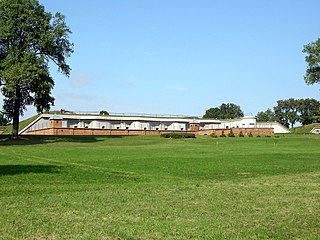 W
WThe Ninth Fort is a stronghold in the northern part of Šilainiai elderate, Kaunas, Lithuania. It is a part of the Kaunas Fortress, which was constructed in the late 19th century. During the occupation of Kaunas and the rest of Lithuania by the Soviet Union, the fort was used as a prison and way-station for prisoners being transported to labour camps. After the occupation of Lithuania by Nazi Germany, the fort was used as a place of execution for Jews, captured Soviets, and others.
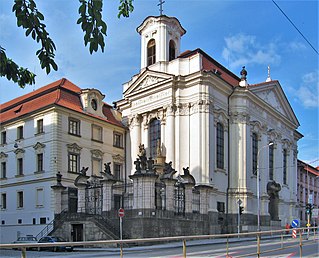 W
WThe Saints Cyril and Methodius Cathedral in Nové Město, Prague, the Czech Republic, is the principal Czech and Slovak Orthodox Church.
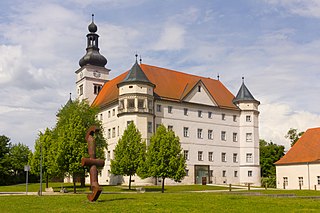 W
WSchloss Hartheim, also known as Hartheim Castle, is a castle at Alkoven in Upper Austria, some 14 kilometres (9 mi) from Linz, Austria. It was built by Jakob von Aspen in 1600, and it is a prominent Renaissance castle in the country. The building became notorious as one of the centers for the Nazi killing program known as Action T4, in which German citizens deemed mentally or physically unfit were systematically killed with poison gas. After 1942, these killings were extended to include Jews, Communists and others considered undesirable by the state. In this capacity it was known as the Hartheim Euthanasia Centre.
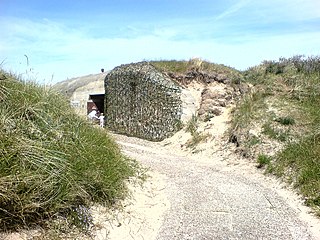 W
WSkagen Bunker Museum is a private museum near the tip of Grenen in the far north of Jutland, Denmark. It is located in an old German bunker of the Regelbau 638 type which was used during the Second World War as an infirmary for treating wounded soldiers. It is now fitted out as a small museum with uniforms, weapons and other artifacts.
 W
WTaganrog Military Museum is the first private military museum in the Russian city of Taganrog. Its exhibits includes displays of military vehicles and weapons.
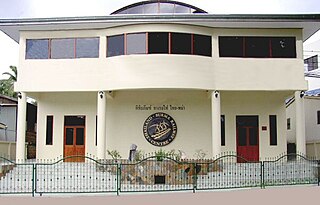 W
WThe Thailand-Burma Railway Centre is a museum and research centre in Kanchanaburi, Thailand. It is privately funded and is run by Rod Beattie, an Australian who is an expert in the history of the Thailand–Burma Railway.
 W
WThe Todt Battery, also known as Batterie Todt, was a battery of coastal artillery built by the Nazi Germany in World War II, located in the hamlet of Haringzelles, Audinghen, near Cape Gris-Nez, Pas de Calais, France.